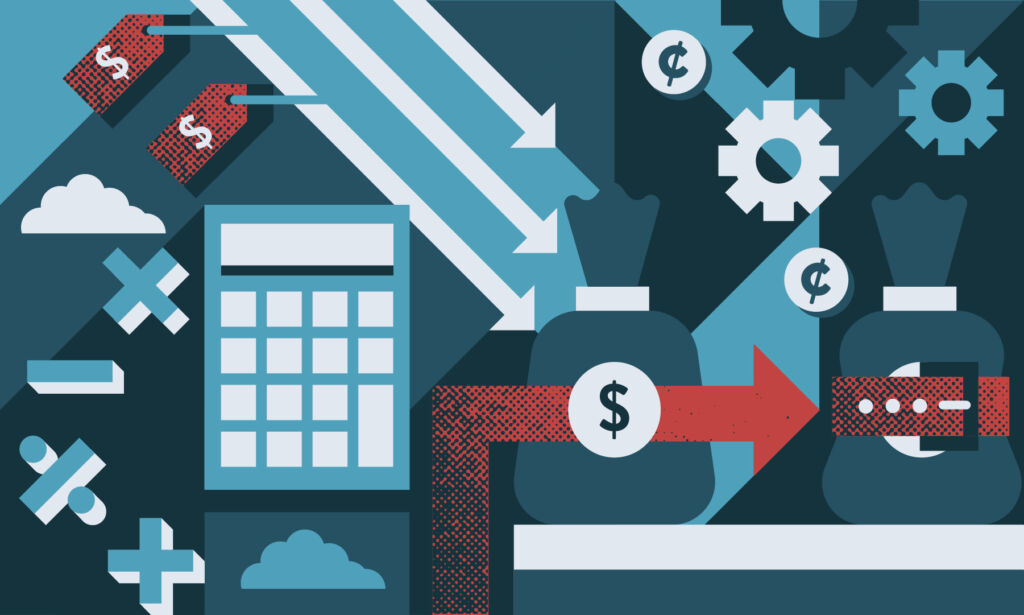While the reduced deficit numbers in Newfoundland and Labrador’s last fiscal update received the lion’s share of attention by the news media, the update contained other good news as well.
Most importantly, it pointed to the potential for a robust post-COVID recovery, with real GDP forecast to grow by 5.8% in 2021 and retail sales, housing starts, capital investment and employment all stronger than expected.
It is this positive growth environment that can do most of the hard work of chipping away at the province’s debt and deficit, as increased economic activity boosts tax revenues and lowers government expenditures on social supports.
Given this reality, you would think that the Newfoundland and Labrador government would run in the opposite direction of any economic policy that might possibly threaten this recovery. Yet the government’s commitment to austerity, through deep spending cuts and public asset sales, is the one policy that has been proven, time and again, to not only hinder economic growth and recovery, but also to exacerbate existing debt and deficit.
In Saskatchewan, we learned this lesson the hard way.
Instead of investing in programs or building a sovereign wealth fund, Saskatchewan used our resource revenue to subsidize unsustainable tax cuts and over-priced megaprojects. When oil prices collapsed, our government immediately hit the austerity switch, hitting us over the head with deficit hysteria.
In 2017, the Saskatchewan government cut health, education, and social service spending, instituted public sector wage reduction, raised the provincial sales tax, sold off our public transportation company and tried to shutter public libraries. We were told that this tough medicine was what was needed to control deficits and return us to balance.
Since that budget, Saskatchewan has posted a deficit every subsequent year, with our total debt now double what it was in 2017.
There are lessons from Alberta here, too. As Chart 1 shows, between the fiscal years 2015-16 and 2017-18, Alberta boosted its program spending by almost 13% while Saskatchewan spending stood still. The result? Higher growth in Alberta, worth $16 billion in economic activity, and GDP growth of 5.2%. Meanwhile, Saskatchewan’s GDP grew by only 3.1% during the same period.
The Newfoundland and Labrador government is pursuing exactly the wrong policy at exactly the wrong time. As a result of the 2008 financial crisis and Great Recession, we have a wealth of evidence from around the world regarding the economic policies that promote recovery versus those that promote stagnation. The evidence is clear. Economies that chose to cut their spending during the downturn fared the worst, were mired in recession for longer, often with higher deficits due to the impacts of economic contraction.
Assessing 30 years of evidence, the International Monetary Fund (IMF) unequivocally concludes: “In economists’ jargon, fiscal consolidations (austerity) are contractionary, not expansionary. This conclusion reverses earlier suggestions in the literature that cutting the budget deficit can spur growth in the short term.”
As the IMF explains, the adoption of austerity measures during an economic downturn is “likely to lower income—hitting wage-earners more than others—and raise unemployment, particularly long-term unemployment.”
Such effects will have the consequence of exacerbating the deficit as declining household income diminishes government tax revenue while growing unemployment puts additional fiscal pressure on social supports like employment insurance, social assistance, re-training allowances, etc.
Attempts to cut spending to tame deficits can have the perverse effect of increasing existing deficits, as prolonged economic stagnation drags down government revenue and requires additional social spending. In light of this, the IMF advises governments to consider delaying deficit-fighting measures until a more robust economic recovery is firmly established.
On top of the economic arguments against austerity, there is an equally important moral argument to be made. Austerity assumes that everyone equally shares in the pain of cuts. This is simply not true. Given that austerity measures primarily target public spending for social programs and services, the effect will be to punish those who rely on these programs and services far more than those who do not.
Mark Blyth, professor of International Political Economy at Brown University, notes that the effects of austerity hit differently depending on your income. “If you reside in the middle or the bottom half of the income and wealth distribution, you rely on government services, both indirect (tax breaks and subsidies) and direct (transfers, public transport, public education, health care).” Those households further up the income distribution that can afford private alternatives are obviously less reliant on such services. If state spending is cut, the effects of doing so are, quite simply, unfairly distributed.
It seems particularly unfair to put the burden of cuts on those at the bottom of the income distribution that are also the most likely to have borne the brunt of the unequal health and financial impacts of the past two years of the pandemic.
This isn’t just an academic question. Governments should be deeply concerned about how the unfairness of austerity is often perceived, particularly post-pandemic. Indeed, the Organisation for Economic Cooperation and Development (OECD) warns that a return to austerity policies post-pandemic may fuel the same political tensions and populist backlash that the world experienced after the 2008 financial crisis.
The deep spending cuts, wage reductions, job loss and fire sale of public assets advanced by the Newfoundland and Labrador government and its advisory committee, Premier’s Economic Recovery Team (PERT), is exactly what every international economic institution is currently warning against.
As economies around the world begin to take their first steps toward a fragile recovery, economic leaders are pleading with governments not to threaten recovery by succumbing to the illusions of austerity economics. U.S. Treasury Secretary Janet Yellen is voicing concern that governments may jeopardize recovery if they are too eager to embrace austerity and “pull back fiscal supports too quickly.” Similarly, Managing Director of the IMF Kristalina Georgieva is warning governments not to put “economic recovery in danger with the suffocating force of austerity.”
After two years of uncertainty, anxiety, dashed hopes and false starts, no one wants to see the recovery delayed a second longer than it has to. And yet the Newfoundland and Labrador government’s insistence on austerity—despite the wealth of evidence against it—may result in Newfoundlanders and Labradorians waiting a lot longer for economic recovery than need be.
In Saskatchewan, we paid the price of austerity and privatization. There’s still time for provinces like Newfoundland and Labrador to learn from our mistakes.







